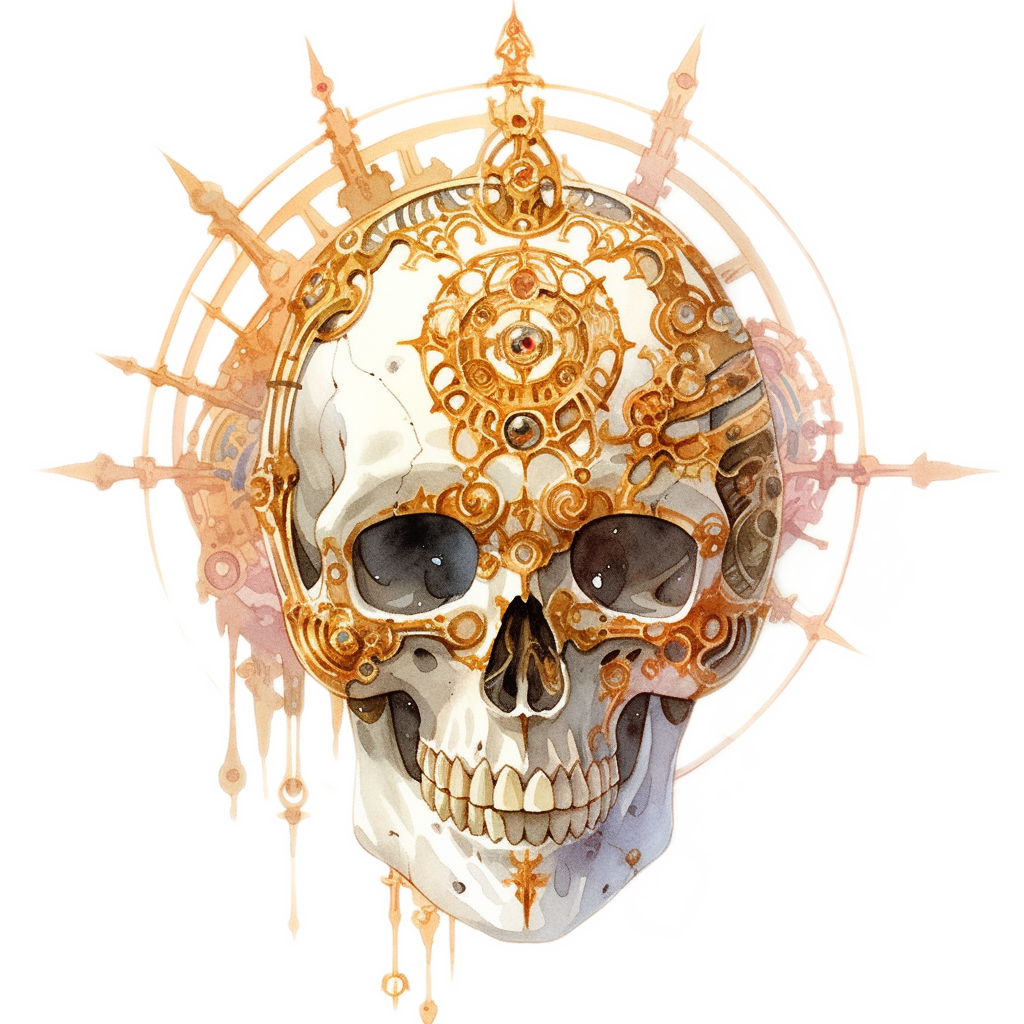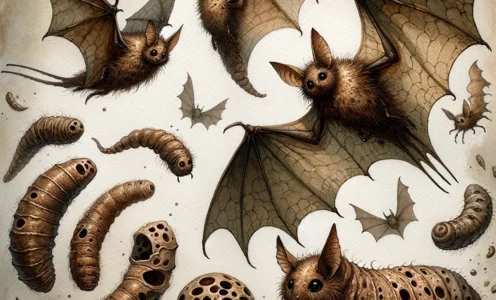Khirth
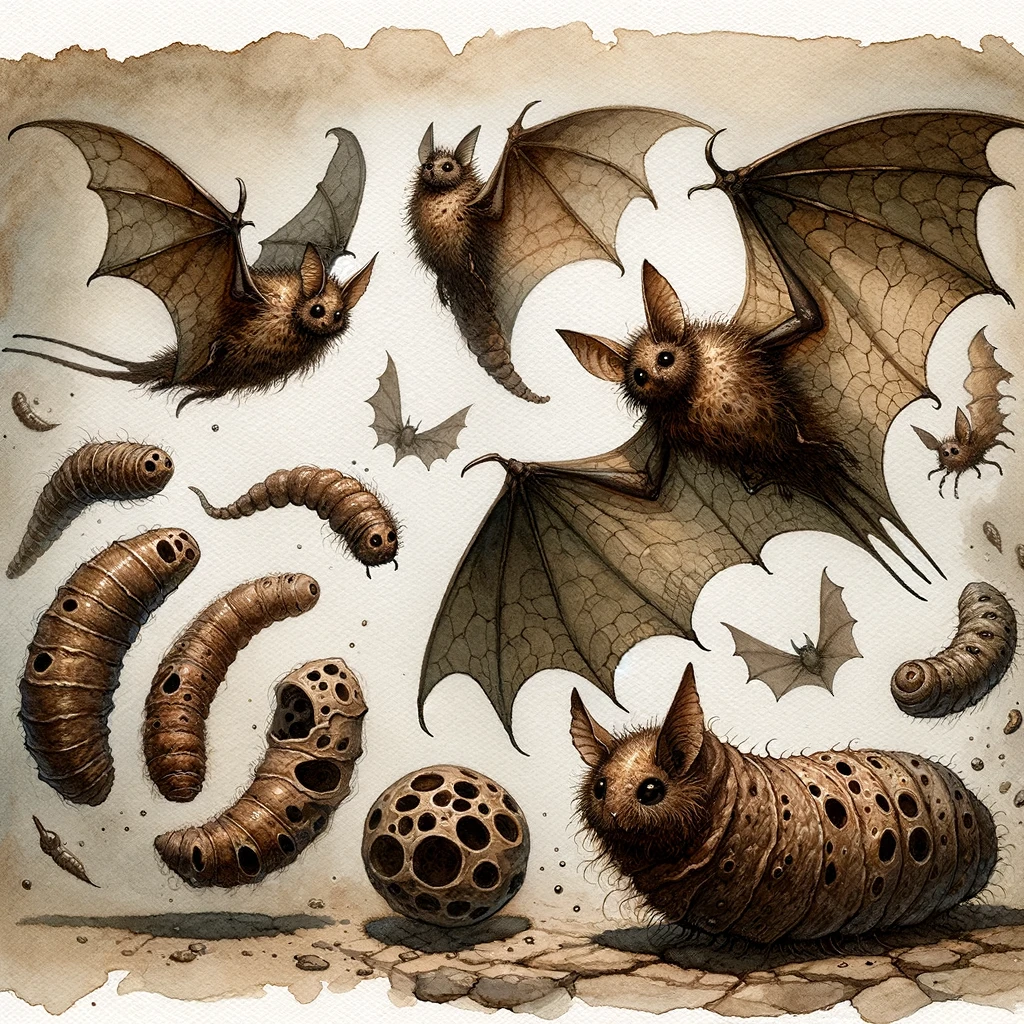
The khirth are a unique species residing in the dusty realms of the multiverse, and a prime example of the strange and wondrous life cycles that the planes can foster. Let’s start from the beginning. The life of a khirth begins deep underground, as a larval worm. These larvae are surprisingly hardy, able to survive in the nutrient-sparse environments of places like the Plane of Dust. They’re small, wriggly, and have an insatiable appetite for the scant organic matter they can find.
After a period of feeding and growth, the larval khirth begin spinning cocoons. This stage is a time of transformation, where the worm-like creature metamorphoses into something entirely different. The cocoons themselves are made of a tough, fibrous material, resilient against the harsh conditions of their environment.
When the transformation is complete, the khirth emerge from their cocoons, no longer earthbound larvae but winged creatures. As bats, they take to the skies of the Plane of Dust, navigating the gritty winds and even more solid silty areas with a grace that belies their humble beginnings. Their wings, though small, are strong and efficient, perfect for manoeuvring through the swirling sands.
In terms of diet, the khirth have a symbiotic relationship with dust mephits. These bats feed on the excretions of the mephits, which are rich in nutrients that are hard to come by in their barren homeland. In return, the dust mephits consume the leftovers from the khirth’s cocoons, extracting nourishment from the fibrous materials.
This cycle of life, from larva to bat, and the symbiotic relationship with the dust mephits, creates a delicate balance in the ecosystems of the dusty planes. The khirth, with their unique life cycle and role in their environment, are a testament to the incredible adaptability and diversity of life across the planes.
Tabbitbug
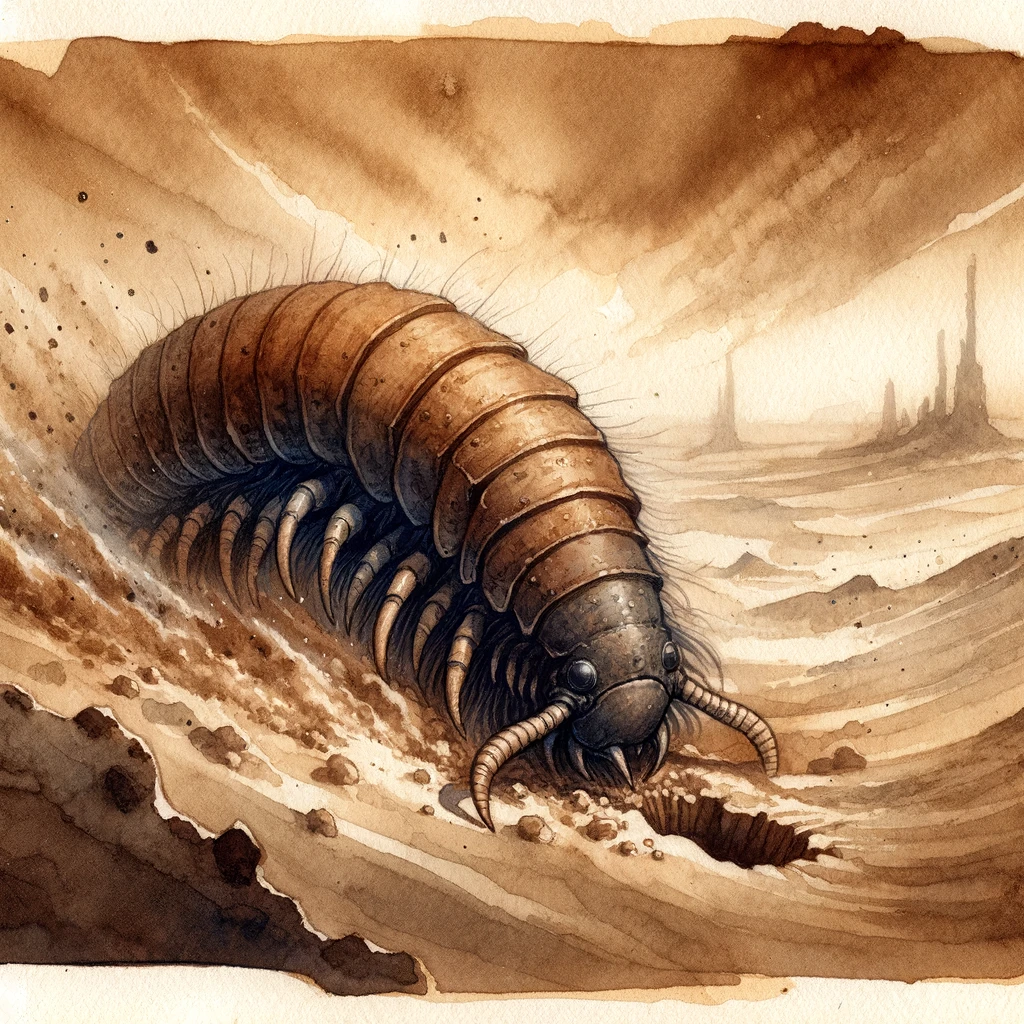
The tabbitbug, a peculiar creature of the Plane of Dust, is as fascinating as it is unsettling, especially to those not fond of many-legged critters. Picture this: a two-foot-long centipede, but not your garden-variety type. These buggers are architects of the dust, master builders of the plane’s ever-shifting sands.
Their bodies, segmented and sinuous, shimmer with a dull, dusty sheen, blending seamlessly into the sandy landscape. Each segment is armored, a natural defense against the harsh environs and predators of the Plane of Dust. Their multitude of legs, perfect for digging and tunneling, move in a hypnotic rhythm, a dance of survival and construction.
Tabbitbugs are renowned for their ability to craft complex tunnel systems and sand-castle-like homes. These aren’t your typical sandcastles, mind you. These structures are marvels of engineering, standing strong against the plane’s relentless winds and shifting sands. Inside, the tunnels are a labyrinthine network, with rooms and chambers that serve various purposes – from nurseries for their young to storerooms for their food.
These creatures are more than just builders; they’re integral to the ecosystem of the Plane of Dust. Their tunnels aerate the soil – or what passes for soil in that plane – and their constant burrowing helps redistribute nutrients (as scarce as they are) across the barren landscape.
In terms of temperament, tabbitbugs are generally reclusive, preferring to spend their time tending to their elaborate homes. However, when threatened, they can be quite formidable. Those many legs are not just for digging; they can deliver a nasty nip with their pincers, and some are said to have a venomous bite, though this is a subject of debate among planar scholars.
Verd
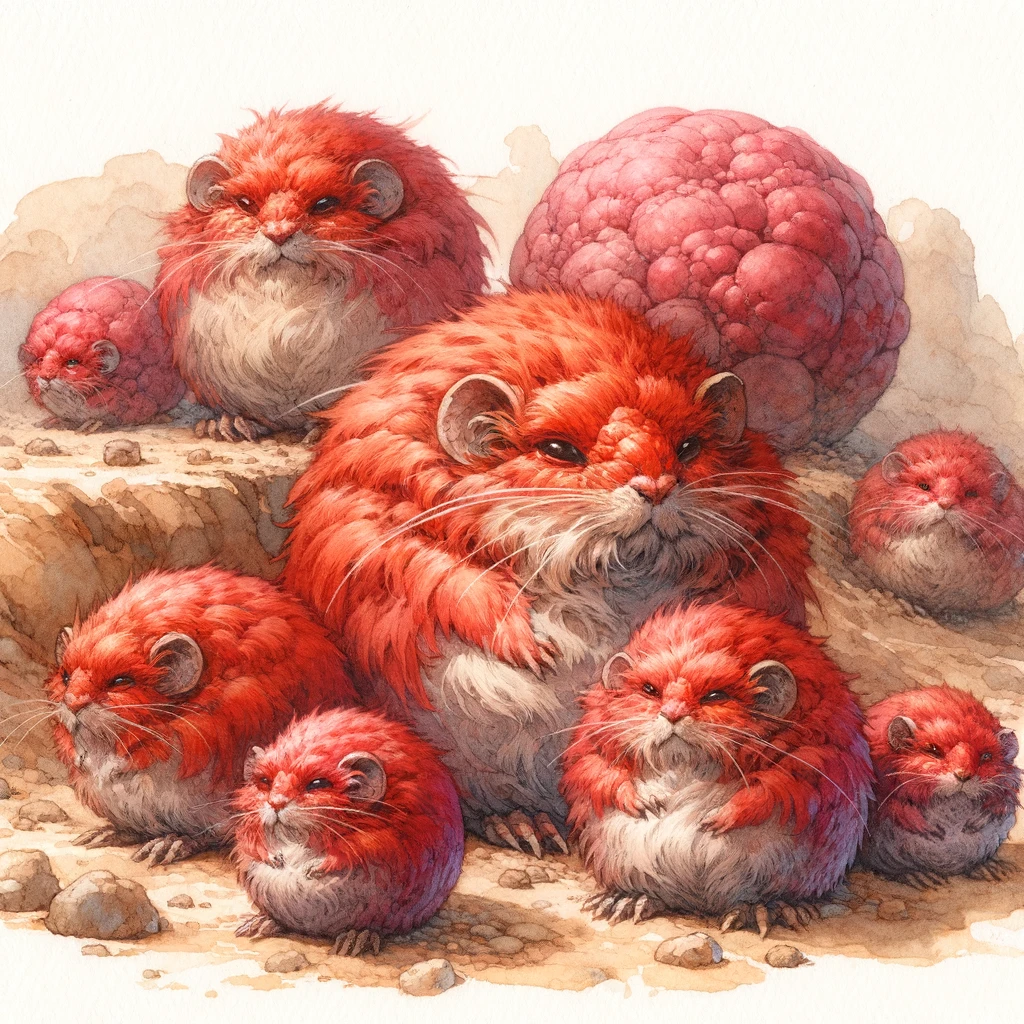
The verd, a creature native to the harsh and sandy realms like the Plane of Dust, is a resilient beast. Picture a roundish, red-furred rodent, not much bigger than a loaf of bread. Its fur, a vibrant shade of red, is thick and bristly, perfect for protecting against the abrasive sands of its environment.
Now, the very has a unique defence mechanism that sets it apart from your average rodent. When a sandstorm whips up, the verd rolls itself into a tight ball, tucking in its head, tail, and limbs, sealing itself off from the harsh world outside. Its fur interlocks, creating a natural barrier against the sand and wind, much like a cloak of armour.
This ability to roll into a ball serves a dual purpose. Not only does it protect the very from the brutal sandstorms, but it also makes it a tough morsel for predators. Many a would-be predator has found itself biting into a mouthful of bristly, unyielding fur instead of a soft, juicy meal.
In terms of behaviour, the very is a solitary creature. It forages using its keen sense of smell to locate roots, tubers, and other edibles buried under the sands. It’s also known to feed on insects and small lizards, making it an opportunistic omnivore.
Canonical Source: Inner Planes [2e] p123
Source: Jon Winter-Holt, mimir.net
